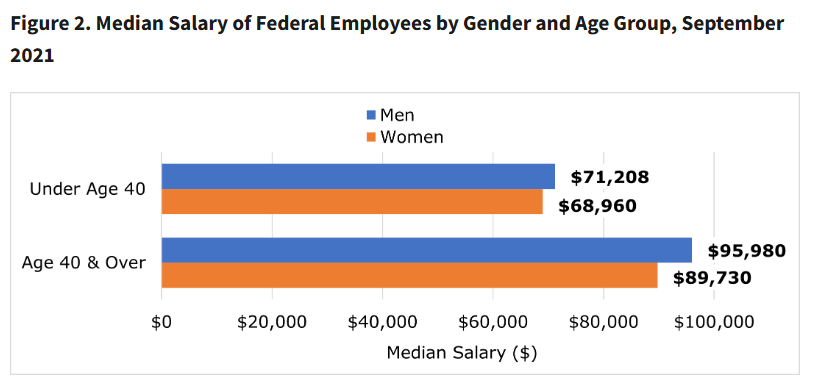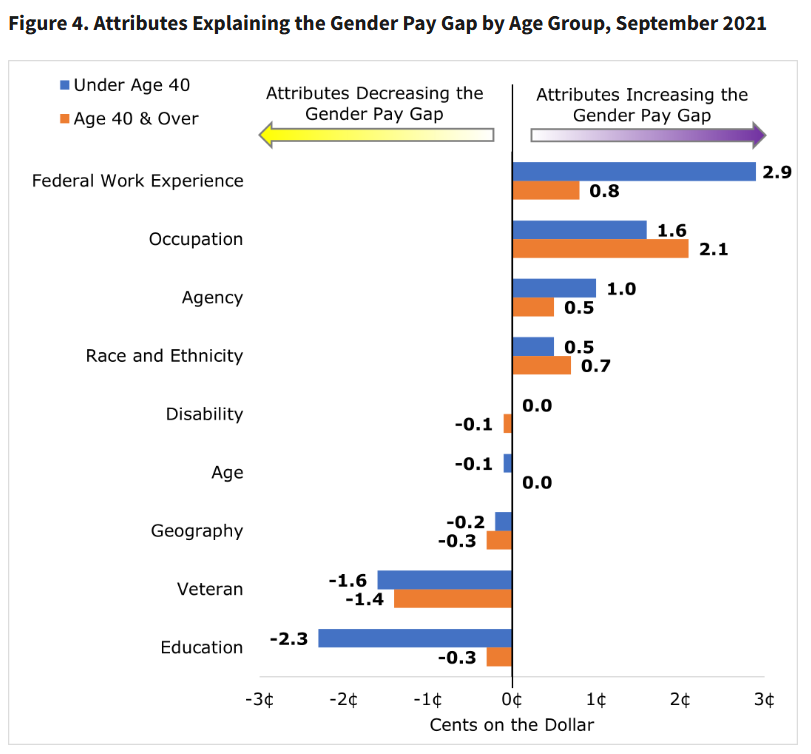Older employees face larger gender-based federal pay gap, EEOC says
By some measures, the federal pay gap between men and women can be about three times larger for feds 40 and over, than feds under 40 years old, EEOC found.
In the federal workforce, older employees are facing a larger gender-based federal pay gap, on average, than younger employees.
By some measures, the federal pay gap between men and women can be about three times larger for feds 40 and over, than feds under 40 years old, a Jan. 2 report from the Equal Employment Opportunity Commission found.
“Gender pay gaps are larger for older employees. Over a lifetime, this adds up,” Karen Brummond, a social science research analyst at EEOC’s office of federal operations, said in a Jan. 2 statement. “A small gender pay gap early in one’s career can multiply into a larger gap over time.”
Nationwide, women are paid 16% lower, on average, than men. But in the federal workforce, women are paid 5.6% less, on average, than men, according to 2022 data. Although smaller in comparison to the private sector, a federal pay gap still exists — and the Office of Personnel Management took steps over the past few years to try to close that gap.
For instance, in January 2024, OPM finalized a rule to bar agencies from considering a job candidate’s salary history in the federal hiring and pay setting processes. Using salary history disproportionately impacts women and workers of color, according to OPM leadership under the Biden administration.
But with the Trump administration moving into the White House later this month, it’s unclear how much progress toward closing the gender federal pay gap will continue. President-elect Donald Trump has already signaled intentions to roll back diversity, equity, inclusion and accessibility initiatives, which have been a focus for the Biden administration since 2021.
“The new EEOC report provides yet more evidence of the persistent gender pay gap in the federal workforce, and how it’s exacerbated by intersecting factors — including age,” Stacey Young, president of the Department of Justice Gender Equality Network, said in a statement. “To promote fairness for federal employees and set an important example for the rest of the American workforce, DOJ GEN urges the incoming administration to take meaningful steps to eliminate all forms of pay inequities.”
Details of EEOC’s pay findings
EEOC’s new report details differences in pay based on various measures, including the gross gender pay gap, as well as the gender pay gap “within-job,” which accounts more specifically for geographic region, agency and occupation.
“Not only do gender pay gaps persist in the federal government, but the intersection of age and gender magnifies the gender pay gap — with older women experiencing a greater disadvantage,” EEOC said in the report. “This disadvantage was more pronounced after accounting for differences in occupation, workplace geography and agency.”
Overall, about 31% of the federal workforce is under age 40, while about 69% is at or above 40 years old. Using OPM workforce data, EEOC found that when accounting for occupation, female employees under 40 are paid about $1,200 less annually, on average, than male employees. But women over 40 are paid about $5,200 less, on average, than men.
“Certain occupations pay more than others, and men may be more highly represented in these occupations,” EEOC said. “This finding indicates that gender differences in occupation that affected pay and disadvantaged women were more prevalent among workers age 40 and over.”
In the report, EEOC also found that the median salary for male employees 40 and older was more than $6,000 above female employees’ median salary. The gap is about three times larger for feds 40 and older. For feds under 40, male employees’ median salary is more than $2,000 above female employees’ median salary.

“Cumulative disadvantage may help explain why the older age group had larger gender pay gaps,” EEOC said. “A cumulative disadvantage occurs when an initial advantage or disadvantage — for example, a relatively small pay gap at younger ages — leads to larger differences over time.”
Experience, education and occupation appear to be some of the top factors influencing the size of the federal pay gap, EEOC’s report showed. The report also measured how factors such as veteran status and geographic location contribute to the federal pay gap.

The various pay systems that the federal government uses to pay employees may also contribute to the differing sizes of pay gaps. For instance, EEOC said if more men are employed at agencies that use higher pay scales, then the gender federal pay gap could increase.
Based on the findings, EEOC recommended agencies review where barriers may exist and focus any governmentwide initiatives for closing the federal pay gap on agencies where the largest pay gaps do exist between men and women.
“Research has often shown that employment inequities are more severe for certain groups who have multiple, intersecting characteristics,” EEOC said. “The results of this report can help equal employment opportunity practitioners to better focus their efforts to address barriers.”
Copyright © 2025 Federal News Network. All rights reserved. This website is not intended for users located within the European Economic Area.
Drew Friedman is a workforce, pay and benefits reporter for Federal News Network.
Follow @dfriedmanWFED






